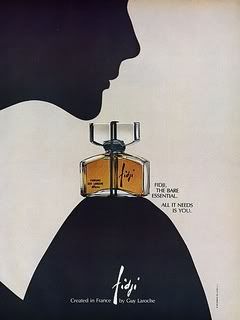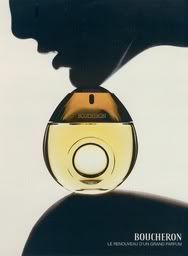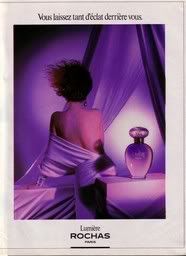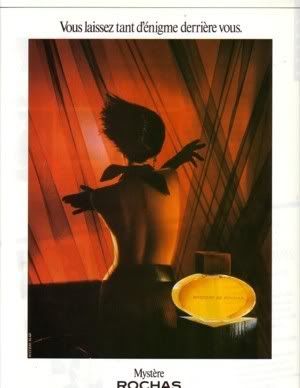~Genesis 1:14
There's no denying that solar power, apart from a theological and cosmic issue, is a potent anti-depressant. But apart from the feeling the rays impart on our Vitamin D-deprived skin sucking them up hungrily and our soul reaching up to feed upon its welcoming embrace, is there anything being triggered in the olfactory nerve of our brains, making us euphoric by the smells recalling summer?
 |
The Doric Temple of Athena Lindia, dating from about 300 BC in Lindos,Island of Rhodes, Greece. Photo by Kenny Barker via pinterest |
Solar notes are a perfumery trope which has been going for a long time, historically speaking, if we track perfumery's record, but which has been slow to be acknowledged in common fragrance marketing parlance. It probably took Narciso for Her to first admit that the term "solar notes" ("solar musk" specifically in NR) seemed incomprehensible to the average perfume lover, yet it managed to display the feeling of brightness experienced rather well. The name Sunessence, attached to the products by Thierry Mugler, such as in Alien Sunessence, is brilliant in capturing all the desirability of the constantly evolving battery of our small astro-system. Fahrenheit 32 and Escale aux Marquises, both by Dior, even predispose us for the sunny disposition by their very presentation.
In truth, the reconstitution of floral notes which are hard or impossible to extract, such as gardenia, or which have been long associated with the balmy ambience of the tropical climates such as tiare and frangipani, no less so the lush ylang-ylang famously grown in the Comores islands, are full of molecules called salicylates which produce—exactly—this heated, sun-lit atmosphere which can warm the cockles of the harshest heart. The harvest/recolt edition of Amarige Ylang de Comores is but one of them, Mayotte (or Mahora in its previous incarnation by Guerlain) is another one. L de Lolita Lempicka, which proudly wears its solar notes on its sleeve, marries the warm notes of flowers, among them immortelle with its sunny ambience of the garrigue, with a salty sea-kissed skin hint, deepening the impression of a scorching sun where people drink out of ceramics and cut nets with daggers kept in their pockets.
 |
La Plage de Calvi by Roger Broders (1930) via Vintage ad browser |
But the connection between the very real and realistic appreciation of the fragrant molecules in the actual flowers (sometimes unknown in their real form to natives and dwellers of northern climes) often perishes in effect compared to the omnipotent mental association between the scent of sun products and our evocation of summery pleasures. Many Europeans equate Ambre Solaire (and not the more American standard Coppertone with its coconut aroma) with summer vacations by the sea.
The secret lies in the use of benzyl salicylate, a blender with supremely floralizing capabilities which was initially used in sun products as a radiation-blocking substance, a now obsolete sunscreen. But the brand connection between product and scent necessitated that the ingredient be kept even after chem laboratories came up with much more effective sunscreens, a phenomenon of scent and product bond that is quiet, frequent and powerful. The effect of the floral note of Ambre Solaire was beloved for the added reason that benzyl salicylate was also favored throughout the best part of the early 20th century perfumery, giving its decisive tone in such classics as L'Air du Temps, Fidji, Norell or Je Reviens, adding a silky powdery sheen that could be felt more than smelled. The pairing with spicy particles also contributed in the creation of carnation accords, so beloved in the first couple of decades of the 20th century.
Nevertheless, the lineage goes even further back with the use of amyl salicylate as a fixative and a modifier in late 19th century mythical compositions, such as Piver's Le Trefle Incarnat (1898). The clover note (trefle is French for "clover") is related to coumarin (indeed coumarin is often referenced as the at once warm, sweetish and fresh note of "new mown hay") and was routinely used to render orchid notes; interestingly it's naturally found in black tea and rum, which smell nothing like orchids! Today isoamyl salicylate is used as a food additive giving a strawberry-like aroma, which convinces me, as if I needed further prompt, that smells are related in patterns that do not necessarily leap to the eye.
This sweetish note was used in one of the pioneering "sun fragrances" of the 1990s, Dior Bronze, ushering a genre of fresh, smooth, warmish and decidedly hedonistic scents to be used both as a sunbathing accompaniment (containing no photosensitizes in the formula) as well as an evocation of the joys of the beach when not worn at the beach, but extending its welcome. The rest was history and a modern best-selling trend. What is also most interesting is that salicylates play a big part in your favorite deodorant, fabric softener, shampoo or hair spray! Like the hen and the egg question, which came first, i.e. the love for solar notes in perfumes which helped the beachy and warm sunny fragrances kick in or the familiarization through the use of those core molecules in functional products, is a hard nut to crack.
Lily perfumes, so Easter-like in their white splendor with their red stamens, have benefited by a splattering of solar notes, too, to render their bright, waxy smell through, while giving the impression that they're being warmed by the sun and splattered by sea spray in some garden where the nights are clear and you can count the stars with ease. Lys Soleia by Guerlain or Vanille Galante by Hermes are two examples of lilies which take on powerfully vanillic and ylang facets which however manage not to evoke the pleasures of the mouth, but of the sensual abandon of one's whole body. Donna Karan Gold adds an ambery slice, much like the musky L de Lempicka does, to round things and broadcast its message even further, just like good ol' god Helios would have, melting poor Icarus's waxen-glued wings …
.jpg)

.bmp)


.jpg)
.jpg)
.jpg)
.jpg)

.jpg)









.jpg)